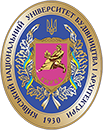Опрацювання понятійного апарату щодо сумісного застосування штучного інтелекту та ІТ як нового підґрунтя вибору варіантів будівель з раціональними характеристиками
1. Бродач М. М. Підвищення теплової ефективності будівель оптимізаційними методами: автореф. дис. канд. техн. наук: 05.23.03. Москва, 1988. 22 с.
2. Табунщик Ю. А., Бродач М. М., Шилкін Н. В. Енергоефективні будівлі. Москва: АВОК-ПРЕС, 2003. 200 с.
3. Табушциков Ю. А., Бродач М. М. Математичне моделювання та оптимізація теплової ефективності будівель. Москва: АВОК-ПРЕС, 2002. 194 с.
4. Талапов В. В. Основи BIM. Введення в інформаційне моделювання будівель. Москва: "ДМК-прес", 2011. 392 с.
5. Tаурогінський В. І. Досвід будівництва енергозберігаючих будівель у Білорусії. Енергозбереження. 2008. № 1.
6. Фаренюк Г. Г., Тимофеєв М. В., Білоус О. М. Методика лабораторних досліджень теплостійкості огорож. Будівельні конструкції. Київ: Логос, 2008. Вип. 68. С. 131–137.
7. Бендер О. С. Інформаційні технології та штучний інтелект у проєктуванні будівельних об'єктів. Матеріали Всеукраїнської науково-технічної конференції. 2020. С. 45–73.
8. Загородній В. Г. Економічний аналіз підвищення рівня теплозахисту конструкцій будівель, що захищають. Зб. праць I Всеросійської наук.-техн. конф. 2008. С. 24–62.
9. Горшков А. С. Енергоефективність у будівництві: питання нормування та заходи щодо зниження енергоспоживання будівель. Інженерно-будівельний журнал. 2010. № 1.
10. Григор'єв М. І. Інтеграція AI до будівельного процесу: від проєктування до експлуатації об'єктів. Архітектурні перспективи. 2021. № 2. С. 5–11.
11. Гагарін В. Г. Економічний аналіз підвищення рівня теплозахисту конструкцій будівель, що захищають. Збірник «Праці I Всеросійської науково-технічної конференції». 2008. С. 24–62.
12. Дмитрієв А. М. Управління енергозберігаючими інноваціями: Навчальний посібник для вузів з будівельних спеціальностей. Москва: Вид-во Асоціації будівельних вузів, 2001. 320 с.
13. Гагарін В. Г., Козлов В. В. Вимоги до теплозахисту та енергетичної ефективності у проєкті актуалізованого СНиП «Тепловий захист будівель». Житлове будівництво. 2011. № 8. С. 2–6.
14. Науково-технічний збірник “Енергоефективність в будівництві та архітектурі”. Випуск 7. Відповідальний редактор П. М. Куліков. Київ: КНУБА, 2015 р. 404 с.
15. Дмитрієв А. М. Управління енергозберігаючими інноваціями: навчальний посібник для вузів з будівельних спеціальностей. Москва: Вид-во Асоціації будівельних вузів, 2001. 320 с.
16. Золотухін Ю. Д. Випробовування будівельних конструкцій. Мінськ: Вища школа, 1983.
17. Касаткін Б. С. Експериментальні методи дослідження деформацій та напружень: Довід. сел. Київ: Наукова думка, 1981, 584 с.
18. Ковалко М. П. Енергозбереження – досвід, проблеми, перспективи. Київ: НАН України; Держкоменерго-збереження України, 1997. 162 с.
19. Самарін О. Д. Про вплив зміни клімату на окупність додаткового утеплення непрозорих огорож. Academia. Архітектура та будівництво. 2009. № 5. С. 561–563.
1. Brodach, M. M. (1988). Improving the thermal efficiency of buildings by optimization methods: Abstract of PhD dissertation in engineering sciences: 05.23.03. Moscow. 22 p.
2. Tabunshchik, Yu. A., Brodach, M. M., & Shilkin, N. V. (2003). Energy-efficient buildings. AVOK-PRESS. 200 p.
3. Tabushchikov, Yu. A., & Brodach, M. M. (2002). Mathematical modeling and optimization of thermal efficiency of buildings. AVOK-PRESS. 194 p.
4. Talapov, V. V. (2011). Fundamentals of BIM. Introduction to building information modeling. "DMK-press". 392 p.
5. Tauroginsky, V. I. (2008). Experience of constructing energy-saving buildings in Belarus. Enerhozberezhennia, (1).
6. Farenyuk, G. G., Tymofeev, M. V., & Bilous, O. M. (2008). Methodology of laboratory studies of enclosure thermal resistance. Building Structures, 68, 131–137.
7. Bender, O. S. (2020). Information technologies and artificial intelligence in the design of building objects. Materials of the All-Ukrainian Scientific and Technical Conference, 45–73.
8. Zagorodny, V. G. (2008). Economic analysis of increasing the level of thermal protection of building envelope structures. Collection of works of the I All-Russian Scientific and Technical Conference, 24–62.
9. Gorshkov, A. S. (2010). Energy efficiency in construction: Issues of standardization and measures to reduce energy consumption of buildings. Engineering and Construction Journal, (1).
10. Grygoriev, M. I. (2021). Integration of AI into the construction process: From design to operation of facilities. Architectural Perspectives, (2), 5–11.
11. Gagarin, V. G. (2008). Economic analysis of increasing the level of thermal protection of building envelope structures. Collection “Proceedings of the I All-Russian Scientific and Technical Conference”, 24–62.
12. Dmitriev, A. M. (2001). Management of energy-saving innovations: A textbook for construction universities. Publishing House of the Association of Construction Universities. 320 p.
13. Gagarin, V. G., & Kozlov, V. V. (2011). Requirements for thermal protection and energy efficiency in the updated SNiP "Thermal protection of buildings" project. Housing Construction, (8), 2–6.
14. Scientific and technical collection “Energy efficiency in construction and architecture”. (2015). Issue 7. Editor-in-chief P. M. Kulikov. Kyiv: KNUBA. 404 p.
15. Dmitriev, A. M. (2001). Management of energy-saving innovations: A textbook for construction universities. Publishing House of the Association of Construction Universities. 320 p.
16. Zolotukhin, Yu. D. (1983). Testing of building structures. Higher School.
17. Kasatkin, B. S. (1981). Experimental methods for studying deformations and stresses: Reference book. Naukova Dumka, 584 р.
18. Kovalenko, M. P. (1997). Energy saving – experience, problems, prospects. NAS of Ukraine; State Committee for Energy Saving of Ukraine. 162 p.
19. Samarin, O. D. (2009). On the impact of climate change on the payback of additional insulation of opaque enclosures. Academia. Architecture and Construction, (5), 561–563.
